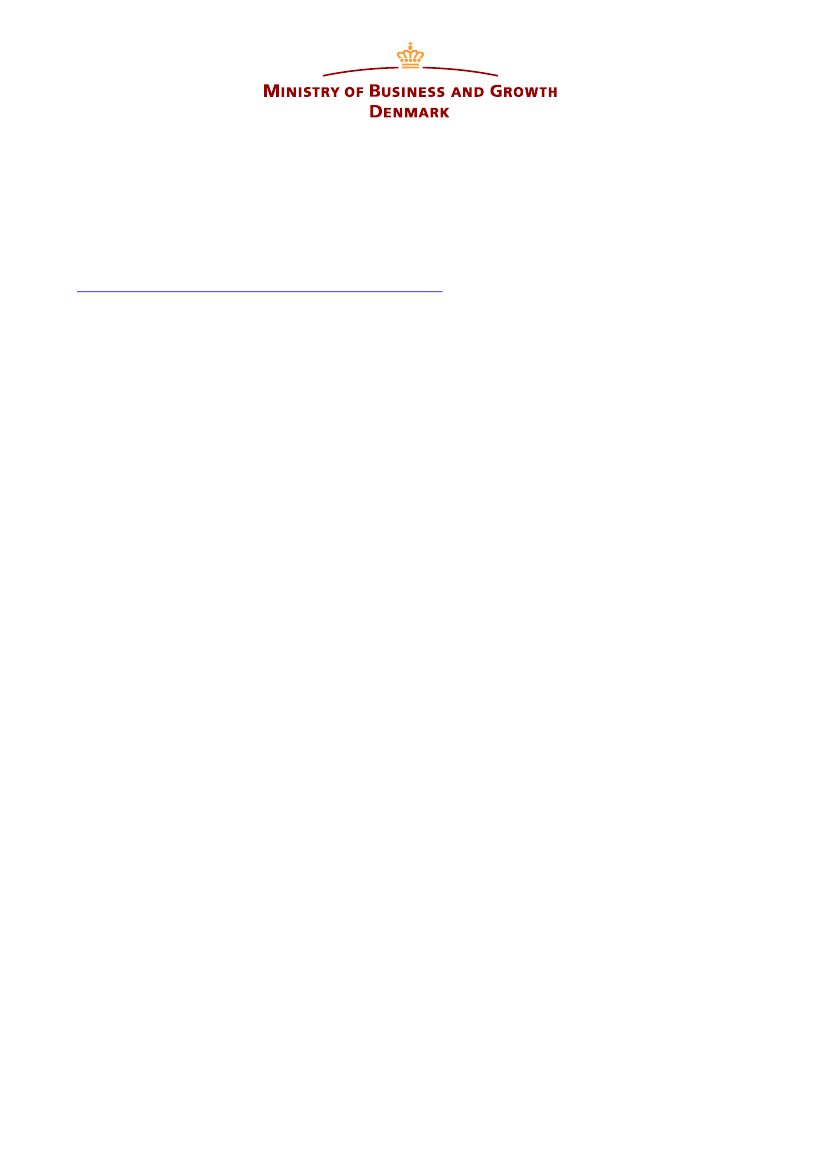
European Commission
Internal Market and Services DG,
Rue de Spa 2 (3/020)
Unit 02
B-1049 Bruxelles
MINISTER FOR BUSINESS AND
GROWTH
MINISTRY OF BUSINESS AND
Danish response to the European Commission’s Consultation on the
Green paper on the long-term financing of the European economy
Denmark welcomes the Commission’s Green Paper on the long-term fi-
nancing of the European economy and the Commission’s aim to start a
broad debate on how to address the challenges associated with financing
long-term investment needs by governments and companies.
Denmark supports many of the ideas in the Green Paper, and we particu-
larly find it positive that the Commission focuses on alternative financing
sources, developing the venture capital market and creating securitization
instruments for small and medium-sized enterprises (SMEs).
If the Commission proceeds with its thoughts on harmonizing the frame-
work for covered bonds, it is essential to take into account the proven
stability of such systems which should not be undermined by a totally
harmonized solution with a less prudent starting point. The Danish model
for covered bonds (Danish mortgage covered bonds - “realkredit”) has
proven to be stable during the financial crisis providing sufficient funding
to the real economy in difficult times and is thus an important example of
long-term stable financing. Please, refer to our answer to question num-
ber 13 in this regard.
Although Denmark recognizes the role of life insurance companies and
pension funds in providing long-term financing, we find that any initia-
tive in this regard should take into account the insurance policy holder
protection. Please, refer to our answer to question number 7 for further
details in this regard.
Financial regulation in the aftermath of the financial crisis has been ex-
tensive and an impact analysis on the overall impact could be relevant,
including how the initiatives in the Green Paper could potentially balance
some of the negative consequences for long-term financing of the finan-
cial regulation. Denmark would suggest that the Commission in collabo-
ration with the three European Supervisory Authorities initiates an in-
depth impact assessment. In this respect, we find the work of EIOPA as
GROWTH
Slotsholmsgade 10-12
DK-1216 Copenhagen K
Tel.
Fax
+45 33 92 33 50
+45 33 12 37 78
CVR no. 10 09 24 85
www.evm.dk